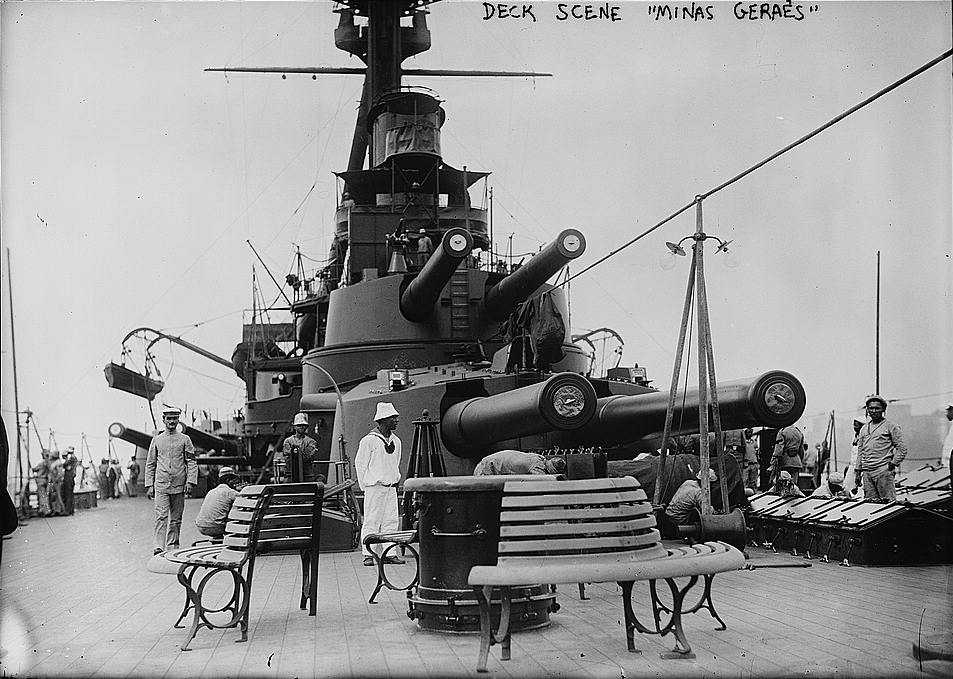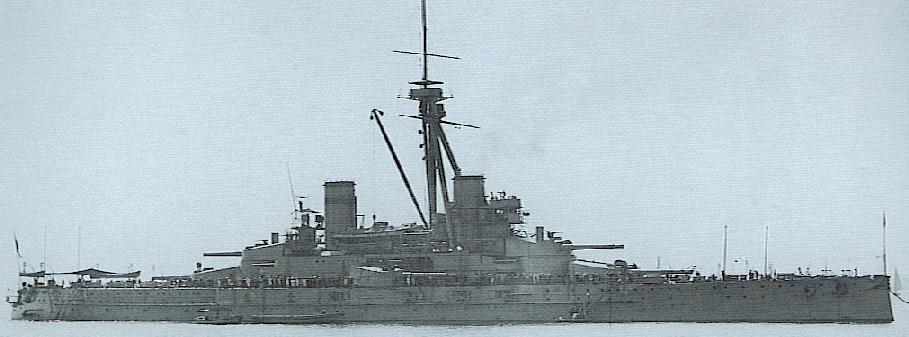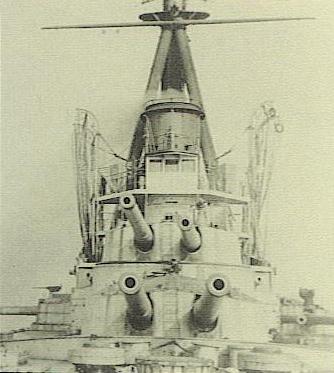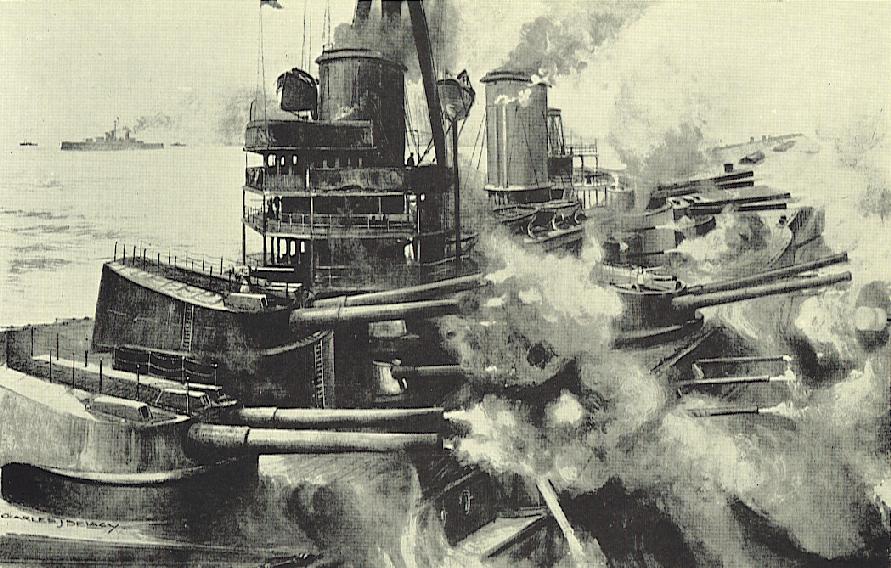
These were Elswick Pattern L guns developed for the Brazilian Navy for the battleships Minas Geraes (name later changed to Minas Gerais) and Sao Paulo. These guns were very similar to the 12"/45 (30.5 cm) Mark X guns used on the HMS Dreadnought, but they were not interchangeable with them.
These guns were of standard wire-wound construction except that the the outer of the two tubes under the wire was of three pieces and that the wire extended for only 75% of the barrel length. The breech mechanism was an Elswick design that had interrupted threads but was not a Welin (stepped) type.
| Designation | 12"/45 (30.5 cm) Elswick Pattern L |
|---|---|
| Ship Class Used On | Minas Gerais class |
| Date Of Design | 1907 |
| Date In Service | 1909 |
| Gun Weight | 60.97 tons (61.95 mt) including BM |
| Gun Length oa | 561.55 in (14.263 m) |
| Bore Length | 540 in (13.716 cm) |
| Rifling Length | N/A |
| Grooves | N/A |
| Lands | N/A |
| Twist | N/A |
| Chamber Volume | 18,000 in3 (294.97 dm3) |
| Rate Of Fire | about 1.5 rounds per minute 1 |
- ^
The Rate of Fire figure given above is found in references for British guns of this caliber, but "Warrior to Dreadnought: Warship Development 1860-1905" quotes Jellicoe's 1906 figures for rates of fire for these guns in gunlayers' tests and in battle practice and notes that the latter figures corresponded well to those actually attained by the Japanese at Tsushima:
Rounds per minute Gunlayers Test 2 Battle Practice 1
| Type | Bag |
|---|---|
| Projectile Types and Weights 1a | APC Mark VI (2crh): 850 lbs. (386 kg) CPC Mark VIIa: 850 lbs. (386 kg) HE Mark IIa: 850 lbs. (386 kg) |
| Bursting Charge | APC Mark VI: 26.3 lbs. (11.9 kg) CPC Mark VIIa: 80 lbs. (36.3 kg) HE Mark IIa: 106.5 lbs. (48.3 kg) |
| Projectile Length | APC Mark VI: 39.7 in (100.8 cm) CPC Mark VIIa: 48.4 in (122.9 cm) HE Mark IIa: 48.3 in (122.7 cm) |
| Propellant Charge | 285 lbs. (129.3 kg) CSP2 (tubular grain) |
| Muzzle Velocity | 2,800 fps (853 mps) |
| Working Pressure | N/A [probably 18 tons/in2 (2,837 kg/cm2)] |
| Approximate Barrel Life | N/A |
| Ammunition stowage per gun | N/A (probably about 80 rounds) |
- ^Projectile weights from ADM 186/169.
| Elevation | Distance |
|---|---|
| 13 degrees | about 18,850 yards (17,236 m) |
| Range | KC Side Armor | Striking Velocity |
|---|---|---|
| 0 yards (0 m) | 16.0" (406 mm) | 2,850 fps (869 mps) |
| 10,000 yards (9,144 m) | 10.6" (269 mm) | 1,900 fps (579 mps) |
Data from "British Battleships of World War Two" for an uncapped AP shell striking a plate at 90 degrees, i.e., with the axis of the shell perpendicular to the face of the plate. A capped shell would show about 10 to 20% improvement at low velocities and about 30 to 50% improvement at high velocities.
| Range | KC Side Armor |
|---|---|
| 7,600 yards (6,950 m) | 12" (305 mm) |
Data from "British Battleships: 1860 - 1950" and may reflect the performance of an APC projectile.
| Designation |
|
|---|---|
| Weight | about 460 tons (467 mt) |
| Elevation | -5 / +13 degrees 1b |
| Rate of Elevation | N/A |
| Train | Forward, Aft and Superfiring 2b turrets: About -150 / +150 degrees Others: About +30 / +150 to either side |
| Rate of Train | N/A |
| Gun Recoil | N/A |
| Loading Angle | +5 degrees |
Gun axes were 90 inches (228.6 cm) apart.
These mountings were hydraulically powered with the hoists broken at the working chamber.



Data from:
- "Warrior to Dreadnought: Warship Development 1860-1905" and "The Grand Fleet: Warship Design and Development 1906-1922" both by D.K. Brown
- "The Big Gun: Battleship Main Armament 1860-1945" by Peter Hodges
- "Battleships of World War I" by Peter Hore
- "The Big Battleship" by Richard Hough
- "The Brazilian Dreadnoughts, 1904-1914" article in "Warship International" No. 3, 1988 by David Topliss
British records:
Special help by Neil Stirling and Eddie Erhart
- 05 December 2007
- Benchmark
- 25 March 2010
- Added photograph of stern turrets
- 26 December 2010
- Comment about name change, changed maximum elevation note
